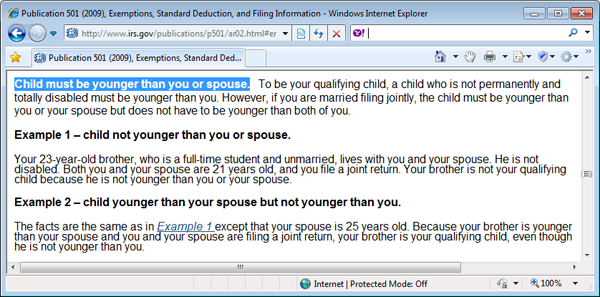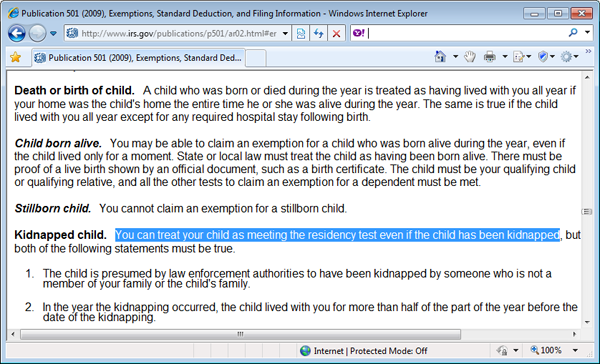Archive for March, 2010
2010/03/15
jetblue false ad alert
Here it says,
TrueBlue gives you:
…
* Points that don’t expire2
…
Then, the fine print,
2 Points don’t expire as long as you earn points through flying JetBlue or through the use of the JetBlue Card from American Express on eligible purchases at least once in a 12-month period.
Hello!? That’s not points that don’t expire! In fact, that’s points that do expire, like how they do on basically all airlines except Southwest, which is even worse. Mileage policies here.
2010/03/14
storing medicine in the refrigerator
It is said that you should store medicine in a cool, dry, and dark place. Then they say, don’t store it in a refrigerator, because “although it is cool, it is also humid.” I think this goes against basic physics. Yes, the refrigerator almost always has higher relative humdity than the room air, but in terms of absolute humidity of water vapor suspended in gas form in the air, it has to be lower. The rest of the water is in liquid form somewhere, like on the walls and lid, and those are water molecules that won’t be hitting the pills (unless they pool at the bottom, that is). In fact, people complain all the time about refrigerator air being too dry for their produce. So it seems the refrigerator is in fact an excellent place to store medicine.
2010/03/13
coding block length in action
This article talks about the switch to 4096-byte sectors from the current 512-byte sectors for PC hard disks. This section is interesting:
4096 byte sectors don’t solve the analog problem—signals are getting weaker, and noise is getting stronger, and only reduced densities or some breakthrough in recording technology are going to change that—but it helps substantially with the error-correcting problem. Due to the way error correcting codes work, larger sectors require relatively less error correcting data to protect against the same size errors. A 4096 byte sector is equivalent to eight 512 byte sectors. With 40 bytes per sector for finding sector starts and 40 bytes for error correcting, protecting against 50 error bits, 4096 bytes requires (8 x 512 + 8 x 40 + 8 x 40) = 4736 bytes; 4096 of data, 640 of overhead. The total protection is against 400 error bits (50 bits per sector, eight sectors), though they have to be spread evenly among all the sectors.
With 4096 byte sectors, only one spacer start is needed, and to achieve a good level of protection, only 100 bytes of error checking data are required, for a total of (1 x 4096 + 1 x 40 + 1 x 100) = 4236 bytes; 4096 of data, 140 of overhead. 100 bytes per sector can correct up to 1000 consecutive error bits; for the forseeable future, this should be “good enough” to achieve the specified error rates. With an overhead of just 140 bytes per sector, about 96% of the disk’s capacity to be used.
With longer block lengths, the error correction capability generally goes up for the same coding overhead, however, it seems rather more complicated than this. First of all, I don’t think each manufacturer uses the same code or coding structure. (They used to just use Reed-Solomon code, though later they tried concatenating it with LDPC code, and now I hear some are switching to pure LDPC with iterative decoding.) But even if we assume they use some non-exotic block code, and use interleaving for bursts, the math still seems very strange: 40 error correction bytes can only correct 50 consecutive bits currently? I think not.
2010/03/12
stupid powerpoint
I ran into a problem with TeX4PPT the other day.
* As an aside, TeX4PPT inside PowerPoint is probably the fastest way to make scalable figures and math. There is just no way that any other drawing tool even comes close to the speed with which simple diagrams can be made using PowerPoint. Since the LaTeX people seem completely uninterested in the end user, there is basically no choice in the matter. My work flow these days involves LyX initial drafts with LaTeX final drafts for papers and PowerPoint with TeX4PPT for presentations, using pen input for the initial drawings. Not ideal, but getting there.
But I ran into a problem where every time I saved any LaTeX expression with the symbol \(\gamma\), it turns into a degree symbol, that little circle °. It turns out \(\gamma\) is codepoint U+00B0 in the font cmmi10. But PowerPoint’s default master template has gone stupid, and never wants to change the font type of just that one codepoint, so it goes with the Arial glyph there, which is the degree symbol. It doesn’t help that LaTeX is stuck in the stone age and doesn’t know about Unicode, instead using about 20 different fonts with overlapping codepoints to make the expressions.
So in the end I had to carefully recreate a clean master template in PowerPoint. For future use, it is saved here.
2010/03/9
cisco router would “forever change the internet”?
No. It would only mean the peak routing bandwidth across one such router is 322Tbps. It is estimated to be three times the speed of existing systems. So backbone traffic may move a little faster, maybe there will be a little less congestion related losses, but no. It would not forever change the internet. Only applications can do that. So much for the hype.
2010/03/8
zuckerberg of facebook, the machiavellian
According to this article, At Last — The Full Story Of How Facebook Was Founded, Mark Zuckerberg’s founding of Facebook was slightly devious, but no doubt, that little bit of ruthlessness and his generally risk-taking behavior at Harvard made his business succeed.
The story goes that on November 30, 2003, he was asked to write some code for an on-campus dating site called the Harvard Connection. Then on December 7, 2003, Zuckerberg wrote in private communication:
Check this site out: www.harvardconnection.com and then go to harvardconnection.com/datehome.php. Someone is already trying to make a dating site. But they made a mistake haha. They asked me to make it for them. So I’m like delaying it so it won’t be ready until after the facebook thing comes out.
Although it isn’t clear to me that Zuckerberg did not conceive of the “facebook thing” long before his meeting, for somebody who claimed he did not want to work under anybody else, it seems at least curious why he would accept spending time to write code for a similar site. On the other hand, he was skeptical about a straight dating site, designed facebook to be not primarily for dating but something more stealthily innocent (the right call). So it is possible that he was mostly concerned with the timing of the launches of two different sites, rather than their content.
In any case, the real shock is that the whole thing took only two months. The facebook domain was registered on January 11, 2004, and the site launched on February 4, 2004.
2010/03/4
aral sea
Remember Aral Sea in Central Asia? So a few years ago I read that the Aral Sea was losing water due to many decades of irrigation diversion and that it was smaller than you see on maps. Well, guess what, it’s gone, as of a few months ago. You can wipe it off all the maps and globes, guys.
August 2009:

Yo, Google Map, check your own satellite images.
View Larger Map


 Comments(1)
Comments(1)